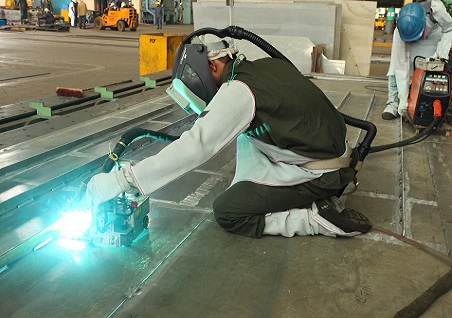
Aluminium structures are a recent development in the ship building, especially used in the small crafts construction. Due to it’s light weight and yield strength required for super structure fabrication, aluminium is used in most of the small crafts construction. In CSL, Aluminium fabrication is adopted for Fast Patrol Vessels (FPV 101-120). Aluminium fabrication is very challenging compared to the mild steel in terms of preservation, handling, raw material preparation, weld joint preparation, welding and other specific requirements/ precautions to be taken.
Since the aluminium is very reactive in nature, oxy fuel cutting is not suitable. Hence following methods shall be used to prepare the aluminium plates for welding.
And the pre weld cleaning must be done to clean all the impurities from the weld joint by following methods
Welding is to be carried out by proper selection of filler wire, which is compatible with yield strength of the parent metal by using 100% argon as a shielding gas. This welding can be performed by using Pulsed MIG machines with argon cylinders attached to the machines. Since the aluminium is very reactive in nature, one must ensure the quality of argon. The surface of a weld usually has areas of oxides and weld"smut" on it. This gray to black coloured smut is composed of aluminum oxide and magnesium oxide. Before depositing another weld pass, it is recommended that the smut and oxides be removed.
The following are the different methods used for the defect rectification in aluminium weld joints.
Most commonly found defects of the aluminium welding are as follows.